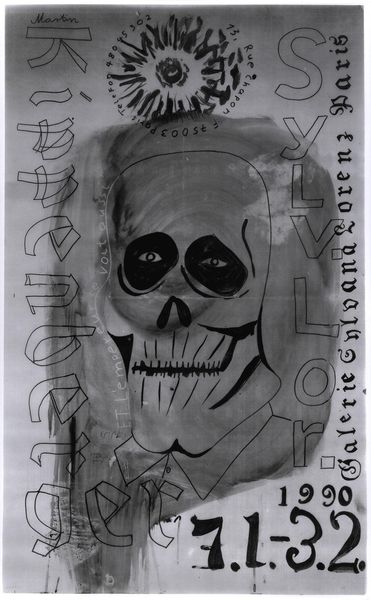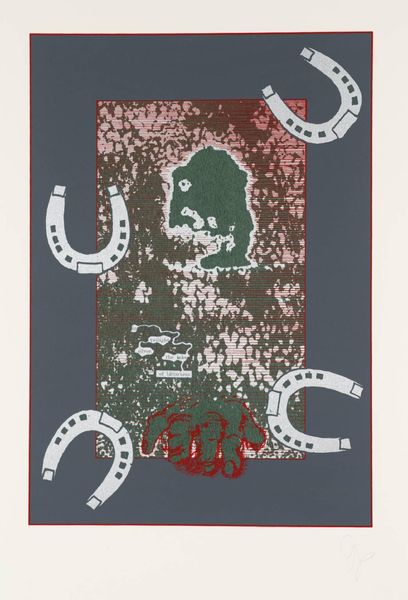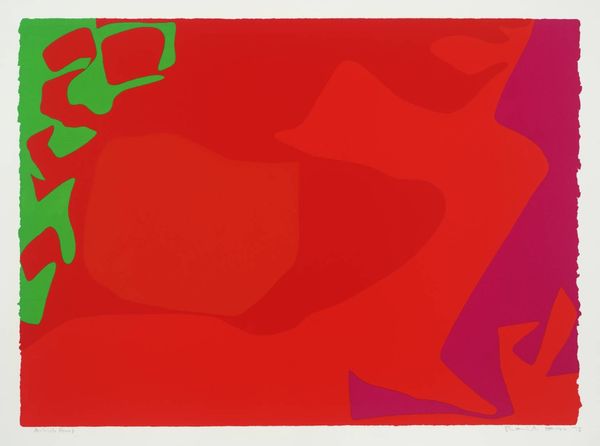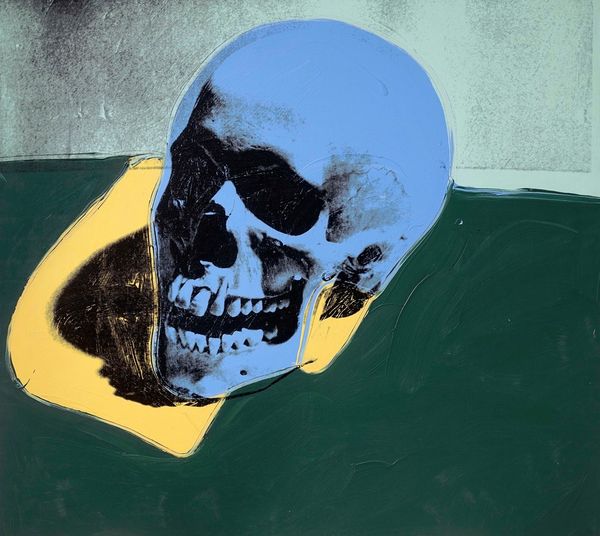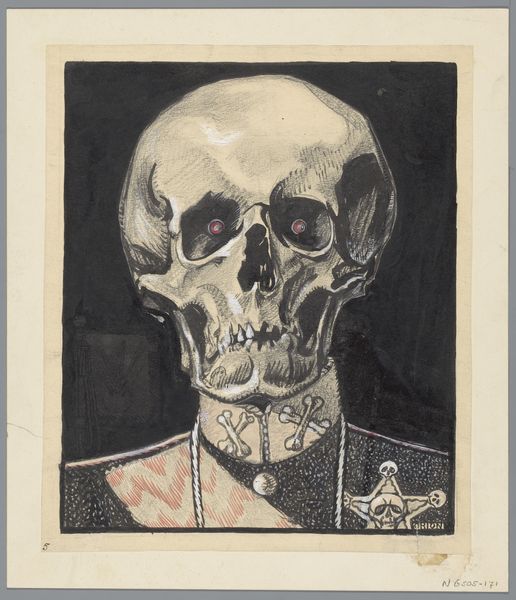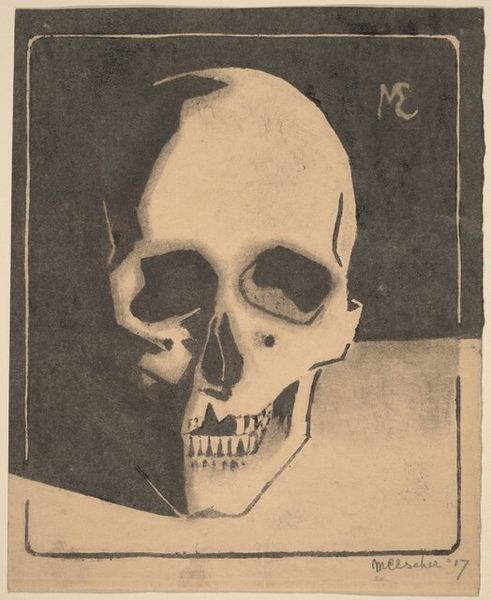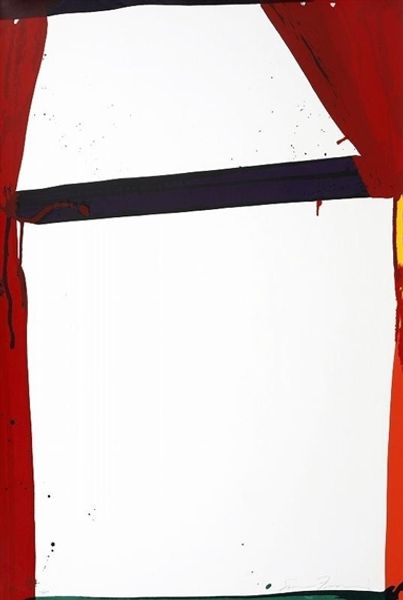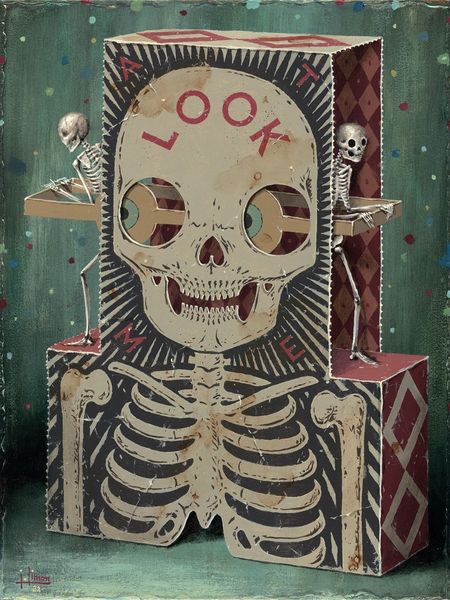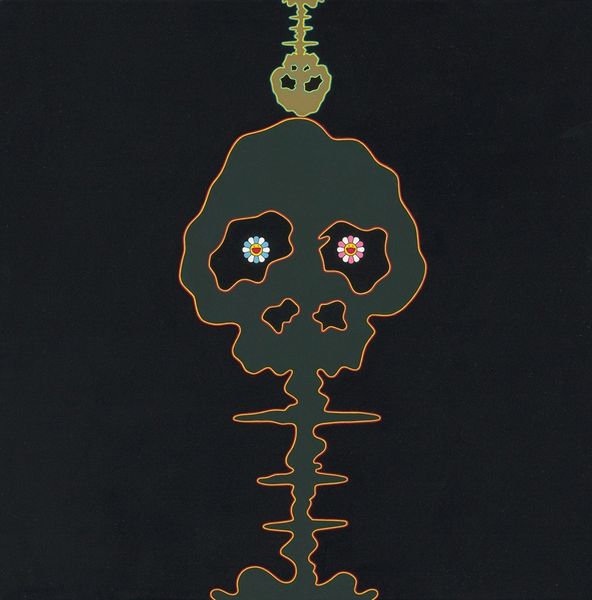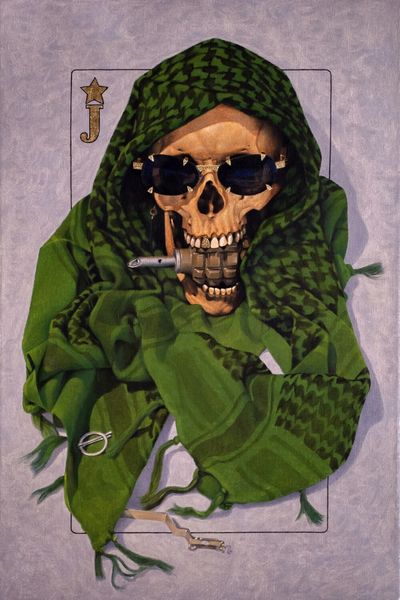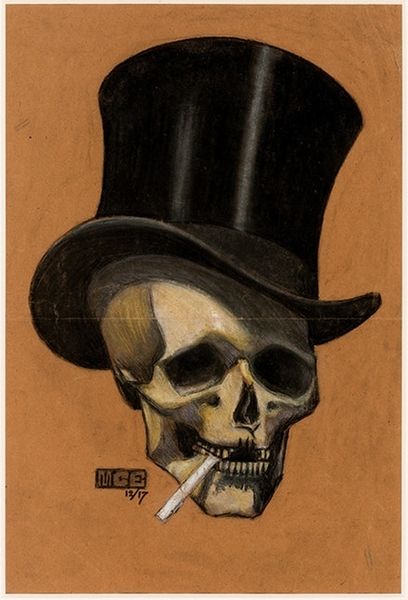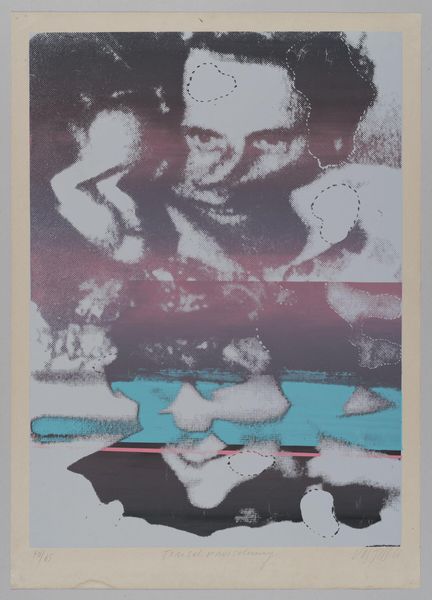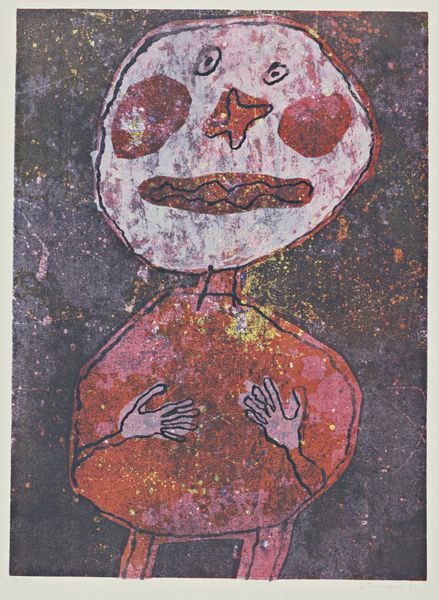
Dimensions: sheet: 76.2 × 55.88 cm (30 × 22 in.)
Copyright: National Gallery of Art: CC0 1.0
Editor: Here we have Rupert García's "Calavera Crystal Ball," a print from 1992. The stark contrast of the skull against that vivid little image at the top… it’s a bit unsettling. What social commentaries might García be trying to make here? Curator: This piece speaks volumes about cultural identity and representation, especially within Chicano/a/x communities. The skull, or "calavera," immediately connects us to Día de los Muertos, a celebration of remembrance and connection with ancestors. Consider how García, a prominent figure in the Chicano Art Movement, often used art to challenge dominant narratives. Editor: So the juxtaposition… is it meant to be a disruption? Curator: Precisely. That bright pop art square disrupts the traditional symbolism. It reminds us that identity is layered and multifaceted. The figure covering their face could symbolize feeling silenced or unseen, which has a powerful message when positioned above the 'calavera' that serves as a reminder of the death brought about by colonization. Who is being silenced, and why? What kind of erasure might Garcia be commenting on? Editor: I never thought about that figure as being silenced; the hand makes it seem like more of a mystery than that! I was only focused on the contrast in styles at play between both figures. Curator: García often blends popular imagery with politically charged messages. His work serves as a critical intervention, demanding viewers confront uncomfortable truths about power, history, and belonging. How does this reframing affect your initial reaction? Editor: It's way less about a simple juxtaposition and more about someone fighting for a place to be seen and heard. Curator: Absolutely. It's a poignant reflection on cultural survival.
Comments
No comments
Be the first to comment and join the conversation on the ultimate creative platform.
